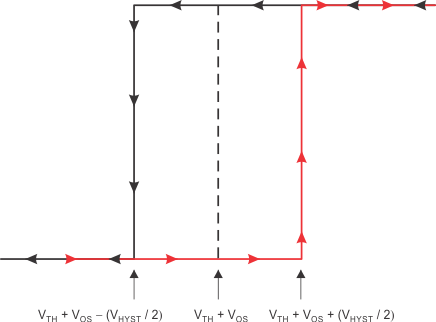JAJSFM7A May 2018 – June 2018 TLV7081
PRODUCTION DATA.
7.4.2 Internal Hysteresis
The device hysteresis transfer curve is shown in Figure 20. This curve is a function of three components: VTH, VOS, and VHYST:
- VTH is the actual set voltage or threshold trip voltage.
- VOS is the internal offset voltage between IN and V+. This voltage is added to VTH to form the actual trip point at which the comparator must respond to change output states.
- VHYST is the internal hysteresis (or trip window) that is designed to reduce comparator sensitivity to noise
(10 mV typical).
 Figure 20. Hysteresis Transfer Curve
Figure 20. Hysteresis Transfer Curve